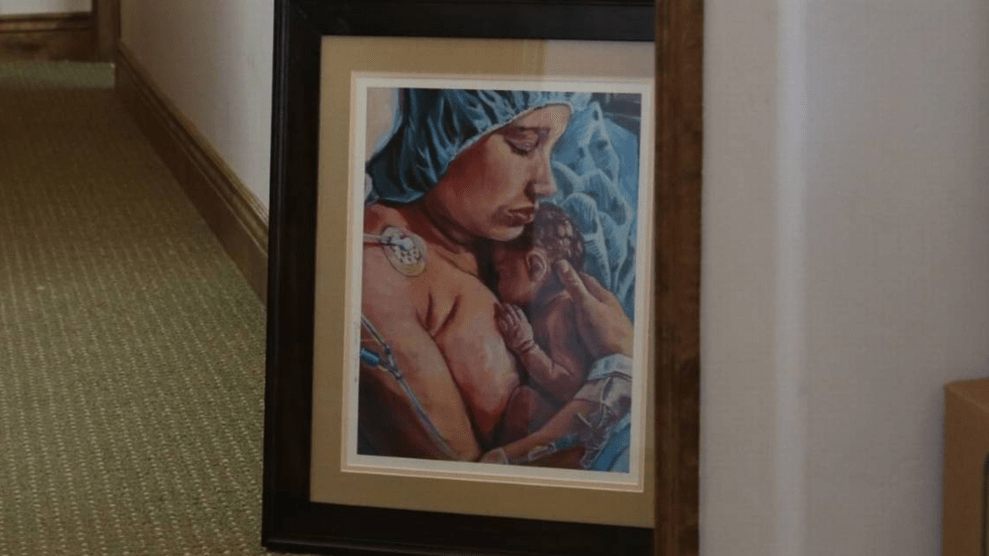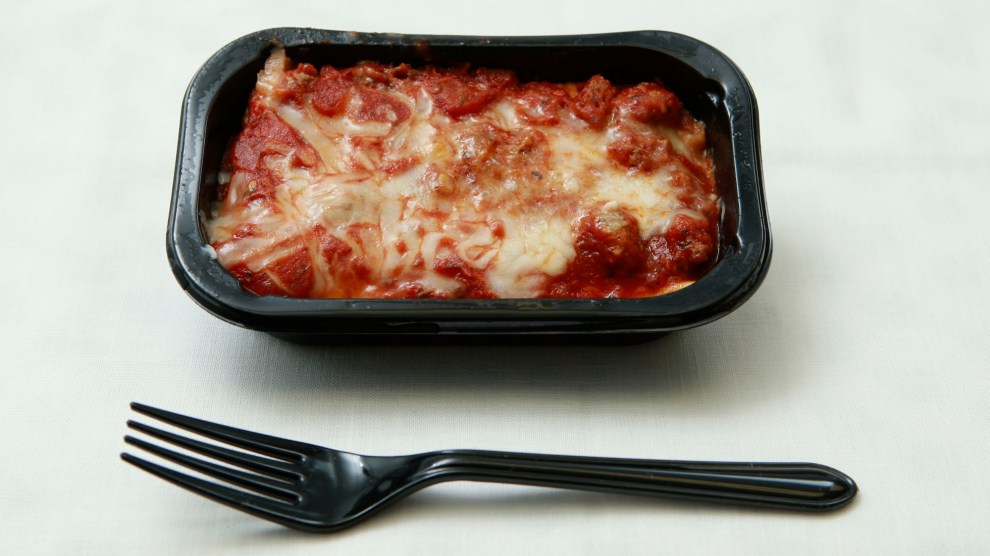Thirty-two people—in their 30s for the most part, male and female, Hispanic, African American, West Indian—are jammed into a basement classroom at the Urban Horizons Center for Culinary Arts discussing snails.
“People actually like to eat them,” a young man says, his voice one part awe to two parts revulsion. He casts his eyes around the small room, looking for a response. More than one student nods his head or screws up her face. Most remain impassive.
It is the first day of class and almost no one knows anyone. Nearly half the group hasn’t dropped out yet, as they will by the end of the six-month program, and the ones who will remain haven’t yet become the colleagues they will by graduation.
“I’ve always wanted to try snake,” a woman in the front ventures, to moderate groans. The cinder-block walls of the room are covered with pictures of broccoli and peppers, and a poster of corn.
“What about rat?” Tony Lee, the instructor, asks, waving a reprint of a New Yorker article about Chinese cuisine that they’ve been reading. The class protests. This is the South Bronx, where rats are not a delicacy. Which is why, in a way, Urban Horizons is here at all.
“I had never set foot in the Bronx till 1988,” recalls Nancy Biberman, a former legal-aid lawyer who is the founder and president of the Women’s Housing and Economic Development Corporation (WHEDCO), which runs the culinary-arts program. Back then, in the late 1980s, the South Bronx was synonymous with urban decay. Biberman’s job was to build apartments for poor people, to repopulate the neighborhood.
The problem was, she says, “the place was rotten to the core. There was no infrastructure. Just putting up housing wasn’t going to work. There wasn’t anything here. No stores, no schools, nothing.” After intense negotiations, the City of New York let Biberman devote a corner of several new buildings she was putting up to what she conceived of as a “horizontal settlement house”—an after-school program in one, a daycare center in another, a physician’s office in a third.
Still, she realized, even this was not enough to re-create a neighborhood from scratch. Biberman needed something bigger: a bigger vision, a bigger space. She found it in 1991, a few blocks away in the South Bronx. It was the aged, shuttered Morrisania Hospital, left to rot for 20 years until it was waist-deep in trash and home to drug dealers and squatters. It was Nancy Biberman’s particular gift, however, not to see the building this way at all. Instead, she could see it as it is today, transformed by $23 million in public and private funds: 132 apartments, pilasters down the hall and wainscoting along the walls, arched windows opened to the sun, vaulted ceilings. She could see nearly 100 kids in Head Start, and a basement given over to a health clinic, a fitness center, rooms of job developers and job seekers, computer software classes, ESL, and family daycare certification training, and the culinary-arts center on the first floor, a state-of-the-art professional kitchen filled with people eager to get off welfare and stake a claim in the land of the middle class.
“I’m all for shelter, but it’s just not enough,” Biberman says, walking through the building, pointing out the before-and-after pictures in the lobby, the sconces, the tile work on the floor. “Bring beauty and dignity into people’s lives—that’s transformative. If it wasn’t so damned beautiful, it wouldn’t have half the impact.”
Downstairs, in the gleaming kitchen, things of beauty are made every day and sent out the door. Miniature crab cakes with chili-lime aioli, penne pasta with herb pesto, spiced samosas, gravlax florets, Linzer torte, Cuban sandwiches. In addition to running the culinary-arts training program, Urban Horizons operates a high-end catering company that counts Goldman Sachs, Columbia University, Christie’s East Auction House, and the Carlyle Hotel among its clients. Supervised by professional instructors, culinary students at Urban Horizons—roughly half of whom are on public assistance—staff the business, learning to bake focaccia and cure salmon and wield a paring knife while filling the orders that come in every day and are posted on the wall board near the garde- manger station. The Urban Horizons Cafe, which opened recently in the Parkchester section of the Bronx, is also a regular, if more down-home, outlet. Trays of Jamaican jerk chicken wings and carrot cake and coconut rice and peas regularly leave Morrisania for Parkchester, where the only other dining-out options are a diner and fast-food franchises like Burger King; whatever doesn’t sell is donated to food pantries and soup kitchens.
“The food company is a social venture that has a double bottom line,” Biberman explains. “It’s training people for good jobs—not as McDonald’s hamburger flippers but in upscale restaurants and catering companies and corporate kitchens.” At the same time, she adds, the catering business brings in money to cover the costs of the on-the-job training. Although the company isn’t turning a profit yet, the goal, in time, is for it to help fund much of the culinary-arts school—the ultimate self-help program.
Deborah Horne, a Class of 2000 graduate of the Center for Culinary Arts, is standing behind the counter at the Urban Horizons Cafe when Biberman and I show up for lunch (grilled chicken Caesar salad, tuna wrap, Equal Exchange coffee, Rice Krispy treats). Horne, who is in her 40s, chanced upon the cooking school a couple of years ago. At the time, she was on public assistance after a leg injury kept her at home, unable to work. But that was after federal welfare-reform legislation in 1996, which required people on public assistance to work in order to continue receiving aid, and New York’s decision the following year to require welfare recipients to put in at least 14 hours every week at city-approved work sites. Horne was sent to WHEDCO to do “whatever,” but there wasn’t whatever to do. Instead, she saw the flyer for the cooking program and asked to be considered for that. Three interviews later, she was in—though she had to fight to get the city to approve the Center for Culinary Arts as her work-fare assignment.
“When I stepped in there it was like a church,” she recalls. “Everyone was smiling. A free cooking program? I told myself, ‘This cannot be true.’ I don’t have that kind of luck. And it was so beautiful. I couldn’t believe welfare had sent me there. Everywhere else they sent me was a dungeon. But this, this was a castle.”
There was a month of classes, 20 hours of which were devoted to knives, and an hour in the gym every day, building up stamina. There were four months in the kitchen, rotating through eight stations, working with chefs who had been trained at the best cooking schools in the world and who had a whole constellation of starred restaurants on their resumes. Then there was a month in Manhattan at Flick International, a private catering service, and after that, graduation. “This is the first time in my life that I have a certificate that says I completed something,” says Horne, who left high school in the 11th grade.
If the measure of employment training is how many of its graduates get jobs, then Urban Horizons is doing pretty well. Roughly 90 percent of its students graduate to jobs, most of them in the most up-to-the-minute kitchens in New York, jobs the majority of them still hold after two years. And then there are the ones who don’t leave, Deborah Horne among them. She was hired as a teaching assistant at Urban Horizons and then, when the cafe was about to open, as one of the managers there.
When Nancy Biberman started WHEDCO in 1991, the organization had two employees and a $75,000 budget. A decade later it employs 120 people with a budget of $8 million from a patchwork of state, federal, and corporate sources. The employees, for the most part, are people who live in the neighborhood. The former hospital is no longer a rat-infested building on a forsaken, crime-ridden block. A brand-new magnet school recently opened down the street, dozens of shops are now unshuttered and open for business, and people stroll casually down clean and unthreatening streets.
“The point is to raise incomes so businesses will want to move in here,” Biberman says, pointing out that it takes more than warm bodies to encourage restaurants and dentists and florists and dry cleaners to venture into a new place. That is the real lesson of WHEDCO and its ancillary programs—that communities grow and flourish where people have beauty and comfort and standing in their lives.
At our table in the cafe, Horne gets up suddenly and gets her purse from behind the counter. “I can do a lot more than I could two years ago,” she says, rifling through it. I think she’s talking about her mastery of puff pastry or the way she sears a duck. She pulls out an envelope and waves it in my direction. Maybe it’s a letter of recommendation, something about her saffron paella, her chicken potpie.
Horne lays the envelope on the table and encourages me to look inside. The return address says J.C. Penney. “The other day I went to Penney’s and they gave me instant credit. I couldn’t believe it. Me.” She removes a red card and shows it around. Her first charge card. “I am proud to pay my bills,” she says.











